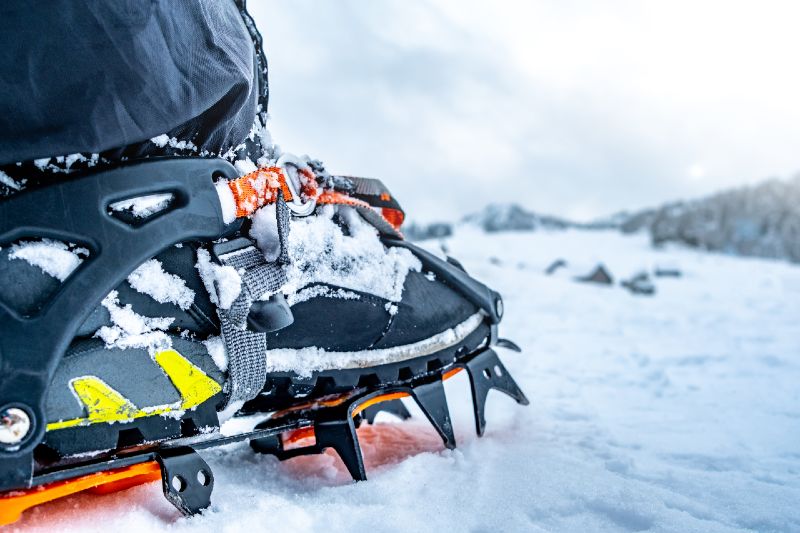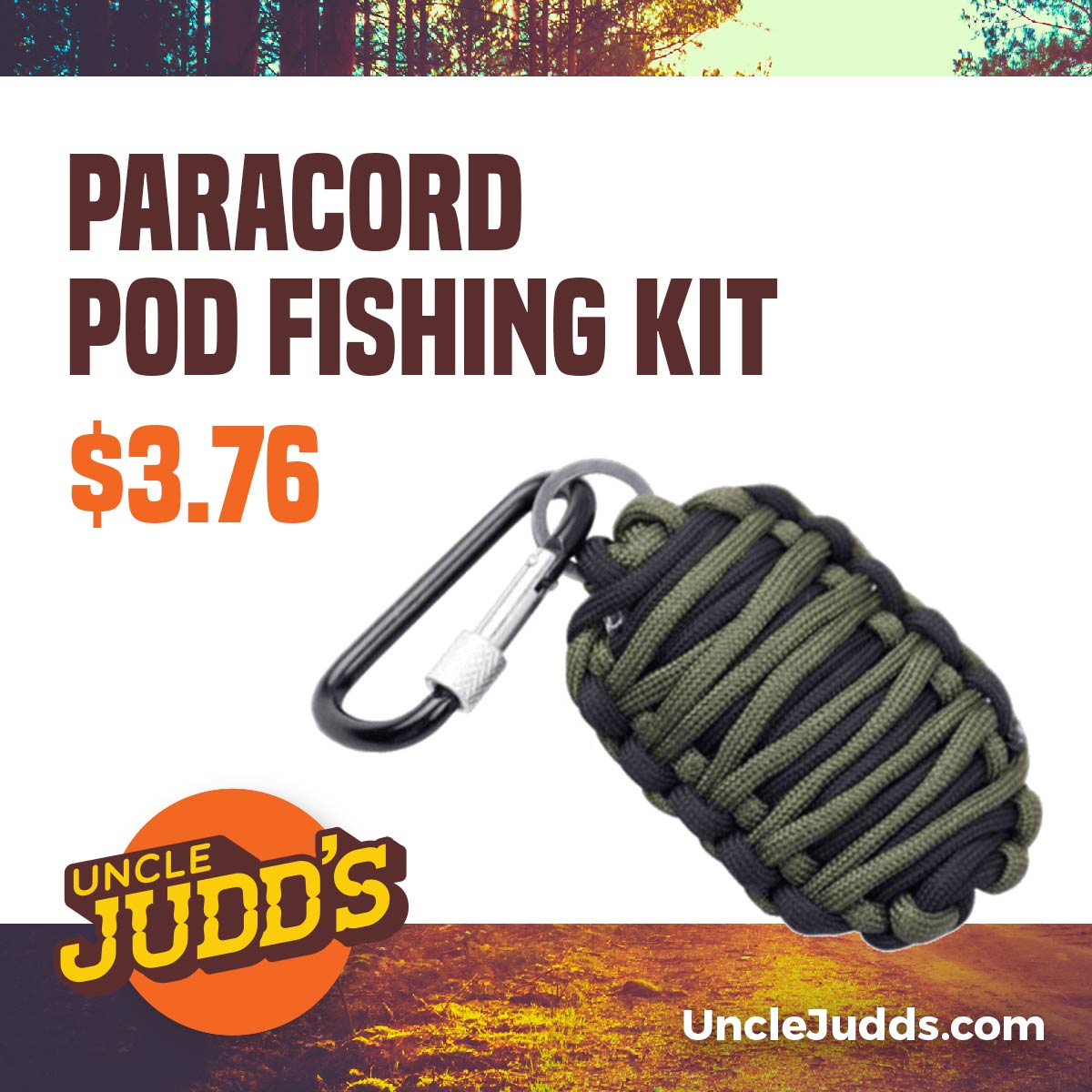Before you go shopping for a pair of hiking boots, you must have some of the boot accessories first. This article will tell you what you need to know about hiking socks and liners for your hiking boots so you’re sure to get the right fit. It will also discuss a few other accessories that you might need to think about before you choose.
RELATED: How to Select the Best Hiking Boot
In this article, we will mainly talk about the accessories themselves, but you should keep in mind that many of these accessories will become involved in your choice of hiking boots. This is especially true when it comes to picking the right size. Your hiking boots must fit not only your feet but the socks and insoles and any custom inserts you use.
Hiking Boot Accessories – Hiking Socks, Insoles, Laces, And Crampons
So, let’s talk about hiking socks, insoles, laces, and crampons, and how these affect your choice of hiking boots.
Hiking Socks
There are at least two general types of hiking socks, and if you are planning any serious hiking, you will need both:
- Cushioning and insulation socks.
- Liner socks.
You may do without the liners on shorter hikes, including most day-hikes. I wear liners only on multi-day backpacking hikes.
Whatever socks you end up choosing, choose them first, and wear them when you go shopping for hiking boots. Your hiking boots must fit you properly with the socks on. And in colder weather, you might need two pairs of cushioning and insulation socks, so make sure your boots can accommodate them.
Both types of socks must be made of a wicking material that will draw moisture away from your skin. Wool is the only good natural wicking material that wears reasonably well. (Silk works also for liner socks, but it doesn’t last long.) Cotton just absorbs moisture and holds it, without wicking it away. Some compositions of polypropylene and nylon can be effective wicking materials for those who may be allergic to wool.
The liner socks go next to your skin. They must be very smooth. This is where you can use silk or sheer nylon if you are prepared to replace the socks every other hike. Or you can use a very fine-knit wool sock. Polypropylene socks, even if they appear to be very smooth and fine, are usually too rough for hiking liners.
Cushioning and insulation socks, which you need even for moderate hiking, must be thick enough to keep your feet warm and to cushion the impact of heavy walking. They don’t have to be soft unless you are doing without the liner socks. Wool is best, unless you are allergic to it, in which case you can use polypropylene or heavier nylon socks (or a blend of these synthetics).
Whatever you choose, and whatever type of hiking you plan to do, test your socks on something less strenuous first. Try them on a shorter hike, or in your everyday walking, and check for hot spots. If your socks create hot spots on your feet after a few miles of walking, they will cause blisters on a longer hike. You want to learn this close to home, and not out in the middle of the wilderness. Even if you’re an experienced hiker, if you are trying a new type of sock, try it on short walks before you commit to it on a long hike.
Insoles and Orthopedic Inserts
Cushioned insoles can make a world of difference in your hiking comfort. Even though hiking boots have built-in cushioning, it is a good idea to use removable insoles that you can replace periodically. That way, if you wear them, you can simply get a new pair instead of having to repair your hiking boots.
There is a bewildering array of removable insoles out there. I’m not going to recommend any particular type, as this is mostly a matter of personal preference. I will only recommend two things:
- Try them on short hikes or in your everyday walking before you set out on a long hike. If you don’t like them, try a different type.
- Bring them with you when you go shopping for your hiking boots. Your boots must fit properly with the insoles in place, so choose a size of hiking boot that fits your feet, socks, and insoles together.
If you wear any orthopedic inserts in your shoes, bring them with you when you go shopping for hiking boots. Again, your hiking boots must fit everything that you’re going to put inside them.
RELATED: Types Of Hiking Boots And Hiking Shoes
Laces for Hiking Boots
Laces are one accessory for your hiking boots that you can think about afterward. The laces that come with your hiking boots are probably fine. However, you will want to carry an extra set of laces on a long hike, in case one break. You may even want to replace your laces before they break if you find some reason to dislike the ones that came with your boots.
Generally, boot laces are braided nylon or similar synthetics. You can get rawhide boot laces, but these are problematic. Yes, they may last longer than braided nylon, but that might just mean that you have to put up with the problems they cause for that much longer. Problems with rawhide boot laces are:
- They tend to stretch with changes in humidity, or even with the passage of time. This requires frequent adjustment.
- Solid rawhide can have sharp edges which can cut your hands as you adjust or tie them. This is less true for braided rawhide or rawhide covered in a braided nylon shell.
Look for laces with a round cross-section. Flat laces may look stylish on your boots, but they tend to break more easily than round ones.
Crampons
Crampons are accessories you can attach to your hiking boots for traction on ice and snow. They are usually metal spikes, sometimes plastic, in a frame that fits under the sole of your hiking boots, attached by adjustable straps or clamps.
There are heavy-duty crampons designed for ice climbing. These are beyond the scope of this article. Just be aware that they exist, and when you see the giant bear-trap spikes sticking out of the bottom and front of the crampons, move along and choose a less aggressive pair.
Light crampons can attach to your hiking boots even if your hiking boots do not have purpose-made crampon attachment points. Just make sure your hiking boots have a distinct lip at the top of the sole that the crampons can attach to.
There are traction accessories designed for walking on icy pavement, but these are not appropriate for hiking. They simply can not stand up to the stress of walking on a steep slope, and they can not stand up to much wear. Make sure you choose a pair of crampons that are purpose-made for hiking.
Conventional crampons extend the full length of your hiking boots. You can also find crampons that fit only into the instep and do not extend to the heel or toe. I have used these, and they work better than you might expect. You have to remember not to walk on your toes when you cross icy patches, but I found that this comes pretty naturally anyway. Your natural reaction to an icy slope is to walk with your feet sideways to the slope and dig in with the edges of your boots, and that’s where the spikes of these half-length crampons are. Works beautifully.
Conclusion
The main thing to remember about accessories for your hiking boots is to think about them first. Choose your socks and insoles first, and bring them and any orthopedic inserts you need with you when you shop for hiking boots so you can be sure to get the right fit. Think about whether you will need crampons, and make sure your hiking boots can accommodate them.






















